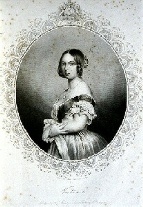|
The London World Exposition 1851
An idea of grave consequences
|
Year: | 1851 | | City: | London | | Country: | Great Britain | | Duration: | 1st May - 11th October 1851
|
|
1
2
| 
Copyright: Tallis 1852, Bd. 1, S. 2 |
|
Antecedents
The great Parisian Industry Exhibitions, which had been significantly strengthening the French economy since the Great Revolution, inspired the British Royal Society for the Encouragement of Arts, Manufactures and Commerce to stage similar national exhibitions from the 1840s onward. On 29 June 1849, a commission lead by the influential civil servant Henry Cole proposed to Prince Albert, chairman of the Royal Society and Queen Victoria’s husband, to internationalise these industrial exhibitions. At first, Albert hesitated. But when the Ministry of Trade announced its willingness to participate, Albert and Cole swiftly went to work. They decided that the exhibition would have to take place in a solid building, went searching for an exhibition site, and convened various committees on financing, on attracting foreign participants, and on the creation of awards. With the Queen’s consent, Hyde Park was to be used as exhibition site.
Funding remained a private responsibility of the Royal Society, since the government wanted to employ a Royal Commission, which would have given an official air to the project, only after the financial foundations had been secured. Thanks to the industrialisation of the country, however, which had increased considerably in recent decades, there was enough capital available amongst broader social strata for the construction of the exhibition building. This capital could be attracted through subscriptions. The great industrial exhibition offered the bourgeoisie the opportunity to display their contribution to the nation’s wealth and to gain social recognition. The 24-strong Royal Commission, which Queen Victoria convened in January of 1850, was an illustrious assembly of the country’s leading scientists, engineers, civil servants and industrialists. Naturally, Prince Albert became its chairman. Numerous conferences and trips by the members of the Royal Commission secured the support of large parts of society, which organised into 330 local committees for the promotion and supply of the exhibition. For the working classes, too, promotion schemes were established, which were intended to inform the workers about the plans and allow them to travel to London. Declarations of participation were received from the most important foreign nations. Even Napoleon III., who had initially planned a similar international exhibition project for Paris, pledged France’s participation.
|



